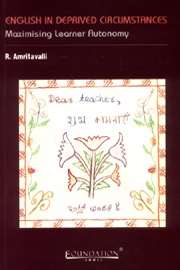1 - Introduction
Published online by Cambridge University Press: 26 October 2011
Summary
Scope
This study arose from the belief that successful second language learning can result when the power to choose their learning materials is vested in the learners themselves. It reports longitudinal and crosssectional data concerning the English reading choices of second language learners at various stages of proficiency. The longitudinal data pertain to fifteen children, fourteen girls and a boy, all of them first generation learners who continued to work for a wage while studying. (Two children were at the school-leaving stage, three at the class VII stage, and the rest at various stages between beginner and class VII stages, during the study. Since these are not mainstream learners, their age profiles do not match the typical values for these classes.) The cross-sectional data are from a comparison group of adult foreign language learners of English with non-Indian languages as their L1.
This book has been envisioned primarily as a narrative of these learners' learning. The methodology is mainly that of the diary and the case study. In this introductory chapter, however, we shall set out some of the philosophical, psychological and pedagogic motivations for the project that give rise to the narrative.
Autonomy and Authenticity in Language
Learning Language learning is currently perceived as tied in with two sets of variables, which both vest in the learner rather than in the teacher:
(i) motivation and attitude;
(ii) ‘unconscious acquisition,’ as opposed to overt, consciously controllable learning.
- Type
- Chapter
- Information
- English in Deprived CircumstancesMaximising Learner Autonomy, pp. 1 - 12Publisher: Foundation BooksPrint publication year: 2007

